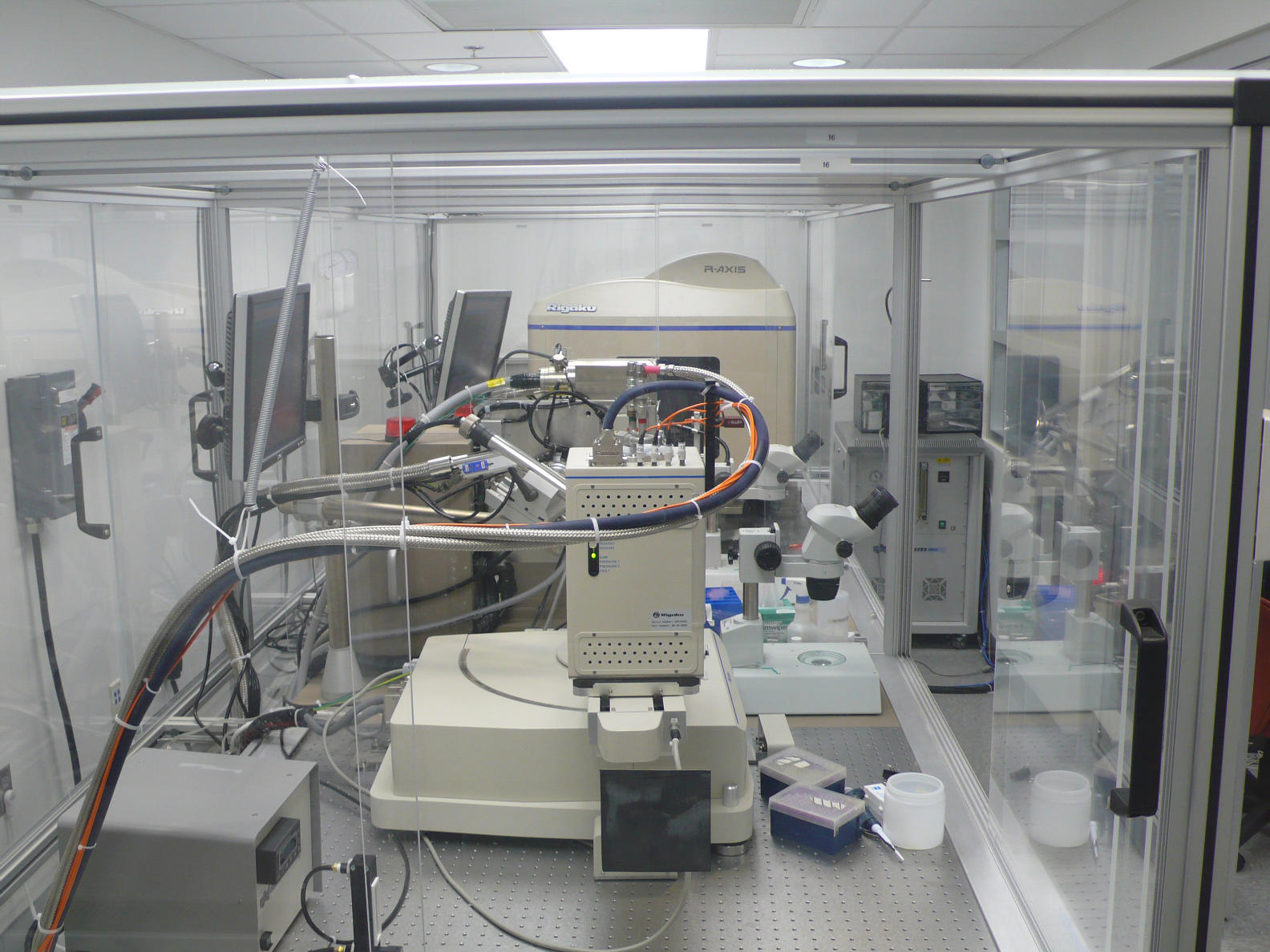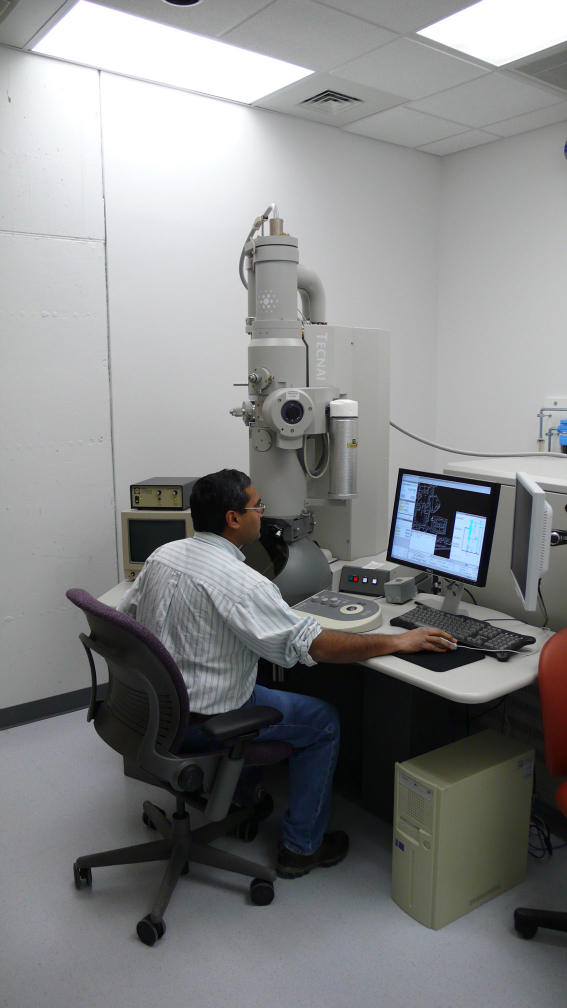 Faculty members within the MBSB graduate program employ a range of modern structural and biophysical methods in the course of their research, permitting students to explore these complementary approaches during classes, research rotations and their PhD research. Both at Carnegie Mellon University (CMU) and the University of Pittsburgh, students and faculty have use of research facilities featuring state-of-the-art equipment. A selection of these resources is highlighted below, along with links to permit further exploration.
Faculty members within the MBSB graduate program employ a range of modern structural and biophysical methods in the course of their research, permitting students to explore these complementary approaches during classes, research rotations and their PhD research. Both at Carnegie Mellon University (CMU) and the University of Pittsburgh, students and faculty have use of research facilities featuring state-of-the-art equipment. A selection of these resources is highlighted below, along with links to permit further exploration.
X-ray facilities

X-ray crystallography is one of the most successful approaches to protein structure determination. The BST3 research building features an X-ray crystallography suite, including robotic systems, X-ray generators and detectors, to allow optimal data to be collected on very small and normal sized crystals, as well as crystals with large unit cells typically containing very large proteins, viruses, or protein-protein assemblies. Collectively, the X-ray crystallography facility and its resources provide everything needed to carry out cutting edge, atomic resolution X-ray crystallographic analysis of macromolecules. Further information can be obtained at the X-ray facility website.
Additional resources for X-ray diffraction can be found elsewhere at other departments of the University of Pittsburgh and Carnegie Mellon University. These local resources are supplemented with access to synchrotron sources, for instance the APS at the Argonne National Laboratory.
NMR facilities
 NMR has a long history in Pittsburgh and continues to be widely used by faculty within the MBSB program. At Pitt the Department of Structural Biology houses an excellent NMR facility with five high field solution NMR spectrometers ranging from 600 to 900 MHz, and two dedicated wide-bore solid-state NMR spectrometers at 600 and 750 MHz. The facility has many cryogenic probes enabling optimal biological solution-state NMR, as well as the equipment needed for modern magic-angle-spinning solid-state NMR. Further details are available on the NMR facility website. MBSB faculty at both CMU and the University of Pittsburgh also use NMR facilities located in their respective departments, such as Chemistry and Biological Sciences.
NMR has a long history in Pittsburgh and continues to be widely used by faculty within the MBSB program. At Pitt the Department of Structural Biology houses an excellent NMR facility with five high field solution NMR spectrometers ranging from 600 to 900 MHz, and two dedicated wide-bore solid-state NMR spectrometers at 600 and 750 MHz. The facility has many cryogenic probes enabling optimal biological solution-state NMR, as well as the equipment needed for modern magic-angle-spinning solid-state NMR. Further details are available on the NMR facility website. MBSB faculty at both CMU and the University of Pittsburgh also use NMR facilities located in their respective departments, such as Chemistry and Biological Sciences.
Electron Microscopy
 Another critical tool in structural biology, (cryo) electron microscopy (EM), permits high-resolution three-dimensional structural analysis of proteins, protein complexes, phages and viruses, macromolecular assemblies, cellular organelles, and bacterial cells. A state-of-the-art EM facility is housed at the BST3 research building, and incorporates three electron microscopes from FEI. These are used by faculty within the MBSB program for high-end applications ranging from cryo-EM to TEM tomography. These tools bridge a critical gap in imaging in the biomedical size spectrum, between molecules at atomic resolution (X-ray and NMR) and the visualization of cells and tissues by light microscopic and conventional electron microscopic methods. More details can be found on the EM Facilities Page.
Another critical tool in structural biology, (cryo) electron microscopy (EM), permits high-resolution three-dimensional structural analysis of proteins, protein complexes, phages and viruses, macromolecular assemblies, cellular organelles, and bacterial cells. A state-of-the-art EM facility is housed at the BST3 research building, and incorporates three electron microscopes from FEI. These are used by faculty within the MBSB program for high-end applications ranging from cryo-EM to TEM tomography. These tools bridge a critical gap in imaging in the biomedical size spectrum, between molecules at atomic resolution (X-ray and NMR) and the visualization of cells and tissues by light microscopic and conventional electron microscopic methods. More details can be found on the EM Facilities Page.
Computational resources
 Computational tools play an increasingly important role in the biophysical and structural research. The MBSB program features several faculty specializing in computational studies aimed at understanding the functioning or malfunctioning of proteins and biological complexes. For these purposes, extensive resources are available. At CMU, several faculty within the Physics Department apply state-of-the-art computational approaches to various biophysical topics. At Pitt, the Department of Computational and Systems Biology and the Department of Structural Biology house dedicated software and arrays of computer clusters. Across different departments, these resources are applied to such topics as protein folding and dynamics, membrane biophysics and membrane protein structure prediction. The state-of-the-art computational resources in Pittsburgh include for instance the special purpose Anton supercomputer at Pitt.
Computational tools play an increasingly important role in the biophysical and structural research. The MBSB program features several faculty specializing in computational studies aimed at understanding the functioning or malfunctioning of proteins and biological complexes. For these purposes, extensive resources are available. At CMU, several faculty within the Physics Department apply state-of-the-art computational approaches to various biophysical topics. At Pitt, the Department of Computational and Systems Biology and the Department of Structural Biology house dedicated software and arrays of computer clusters. Across different departments, these resources are applied to such topics as protein folding and dynamics, membrane biophysics and membrane protein structure prediction. The state-of-the-art computational resources in Pittsburgh include for instance the special purpose Anton supercomputer at Pitt.
Additional techniques
Beyond the methods listed above, MBSB research groups are involved in the development of other state-of-the-art tools that supply structural and dynamical information of critical importance for biophysics and structural biology research. Such approaches include methodologies like in-cell fluorescence, single-molecule studies, electron spin resonance, Raman and other spectroscopies, mass spectrometry, etc. Further information on the expertise and methods used by the MBSB faculty can be obtained via the faculty profiles on the research page.

